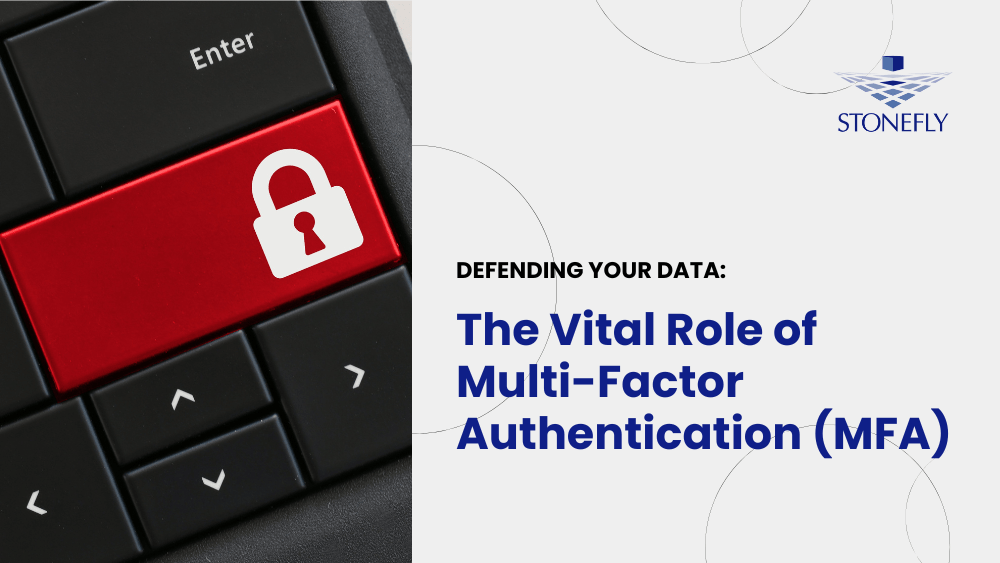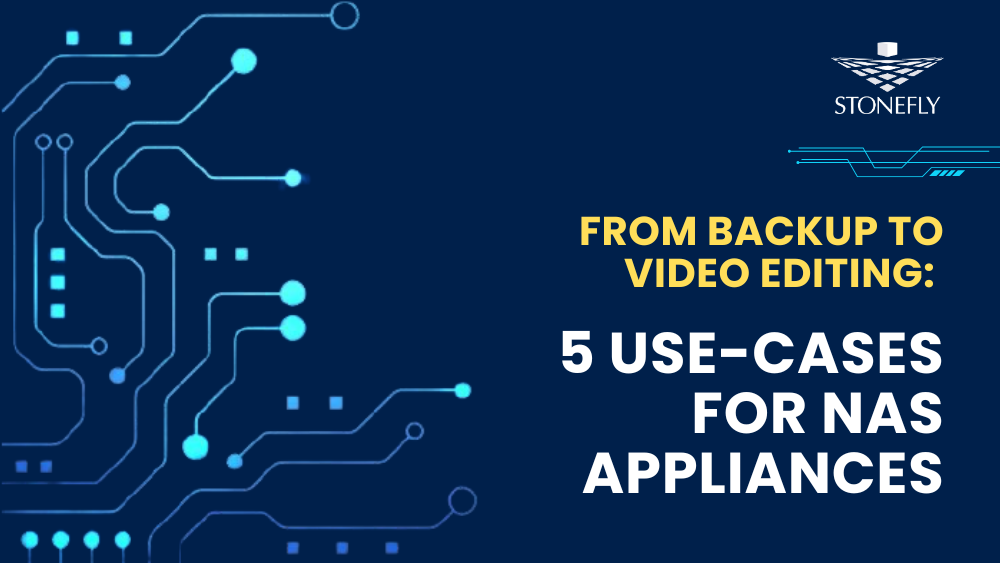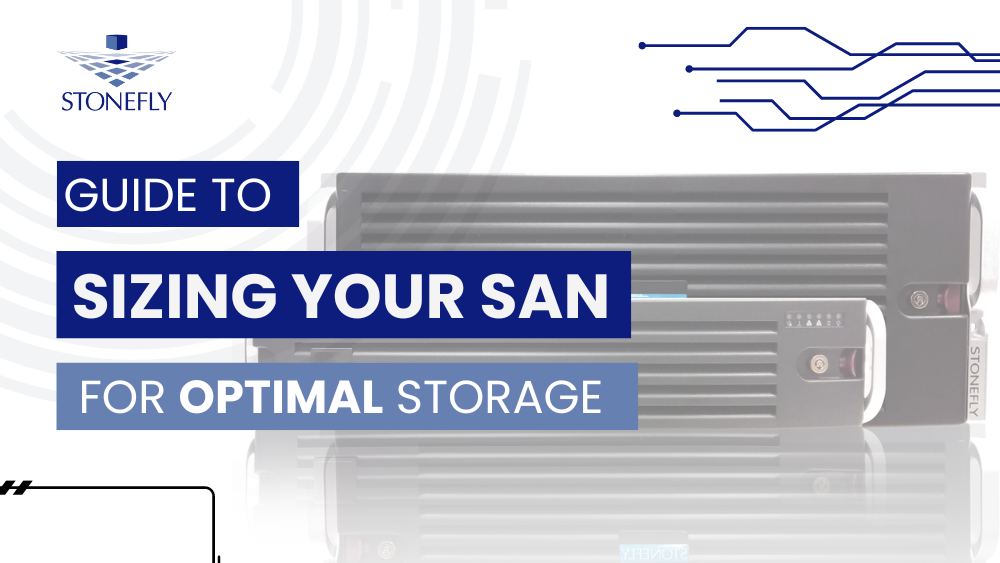This is the third article in the series of articles focused on exploring the hardware architecture of StoneFly’s innovative enterprise-grade data storage, and backup and Disaster Recovery (DR) solutions.
The first article in the series was about our integrated appliances and the second article focused on dual node shared nothing hardware architecture.
In this article, we’ll be discussing the scale out hardware architecture in detail. To simplify your reading experience, here’s the table of contents for the article.
Scale Out Appliance Architecture Overview
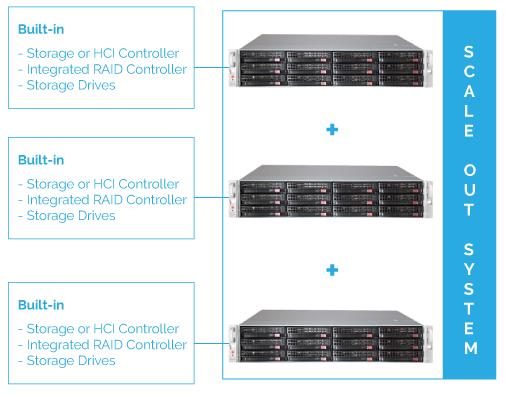
The scale out appliance hardware starts with three integrated appliance nodes. Users can add as many nodes as they need and increase storage and performance capabilities without limits.
Each scale out appliance node has built-in processor, system memory, storage or HCI controller, integrated RAID controller (if applicable*) and storage drives. This implies that with each new appliance node added in the scale out system, the storage capacities and performance capabilities increase simultaneously.
The total workload and IOPs (Input / Output) are distributed / aggregated over the total number of appliance nodes. The system starts with 3x performance capabilities and with each node added, the performance increases in multiples (one more node increases performance to 4x and so on).
* Hardware RAID controller is an optional upgrade for StoneFly NAS appliances.
Scale Out Appliances Hardware Components
As mentioned earlier, the scale out systems comprise of three integrated appliances. This goes without saying that the hardware components supported by integrated appliances are also supported by scale out systems.
For more information about our integrated appliances, click here: Data Center Hardware Overview – Integrated Appliance
Each scale out appliance node has the following key hardware components:
- Built-in Storage Controller or HCI Controller
- Integrated RAID Controller*
- Hot-Swappable Storage Drives
- Redundant Hot-Swappable Power Supplies
* Optional upgrade for StoneFly NAS appliances
Storage Controller or HCI Controller
Each integrated node in the scale out system has a built-in Storage Controller (SC) or HCI controller (if hyperconverged).
The SC or HCI controller functions as the management layer for the scale out system. StoneFly’s patented storage OS (StoneFusion™ or SCVM™ if hyperconverged) is installed on this hardware and runs on dedicated NVMe SSDs.
If it’s hyperconverged storage or backup and DR system, then the hypervisor is also installed on the dedicated NVMe SSD that runs independent of other storage resources.
All StoneFly storage and backup and DR solutions come pre-configured with our patented storage OS: StoneFusion or SCVM. For more information about our award winning enterprise storage OS, read this blog: iSCSI, NAS, Hyperconverged: Manage All with Award Winning Software
Integrated RAID Controller
With the exception of StoneFly enterprise NAS and value-tier NAS solutions, all StoneFly storage and backup and DR appliances have RAID controller as part of the standard configuration.
Our NAS appliances support it as an optional upgrade.
The hardware RAID controller supports 0, 1, 3, 5, 6, 10, 30, 50, and 60 RAID levels with support for RAID cache battery backup. Supported RAID level depends on appliance series and model.
The RAID controller facilitates fault-tolerance and enables users to configure data redundancy within the system to prevent disruption or downtime due to drive failure.
For more information on RAID, read our technical resource section: What is RAID (Redundant Array of Inexpensive Disks)?
Hot-Swappable Storage Drives
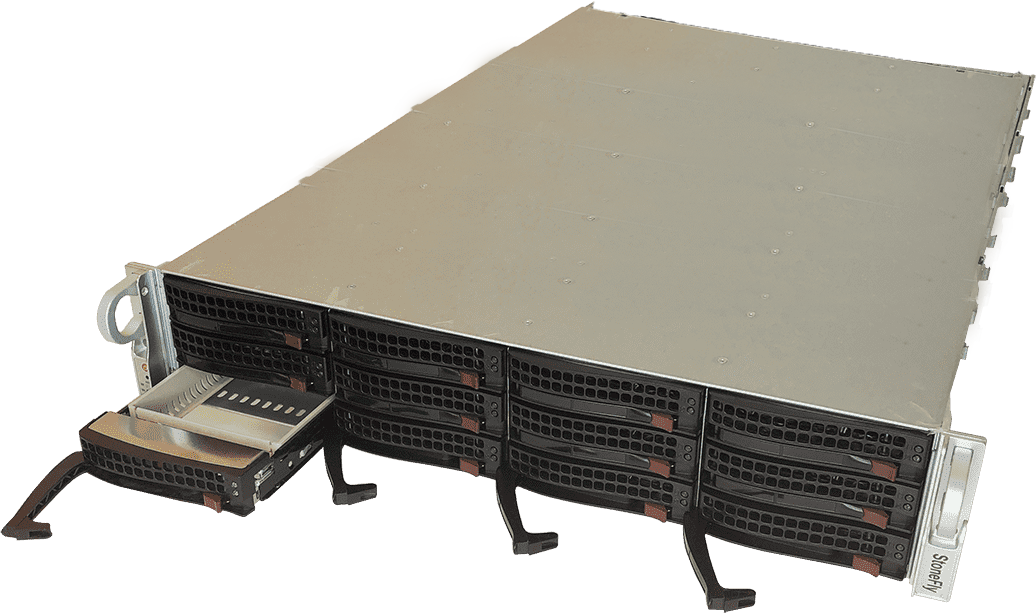
The storage drives in the scale out appliance nodes are hot-swappable. Data center administrators can effortlessly add, remove or replace a storage drive in a simple and quick process.
Supported Storage Drives
StoneFly scale out systems support 3.5” drives and 2.5” drives. Following is a list of the supported storage drives and their available storage capacities:
|
3.5” Enterprise Drives |
|
|
12Gb 7200RPM SAS |
4TB, 6TB, 8TB,10TB, 12TB, 14TB, 16TB |
|
6Gb 7200RPM SATA (4 and 6-bay value-tier only) |
2TB, 4TB, 6TB, 8TB, 10TB, 12TB, 14TB, 16TB |
|
2.5” Enterprise Drives* |
|
|
12Gb 10k SAS |
1.2TB, 1.8TB, 2.4TB |
|
12Gb 15k SAS |
600GB, 900GB |
|
12Gb SAS SSD (1x DWPD) |
960GB, 1.9TB, 3.8TB, 7.6TB |
|
12Gb SAS SSD (3x DWPD) |
800GB, 1.6TB, 3.2TB, 6.4TB |
|
12Gb SAS SSD (10x DWPD) |
Upon Request |
* 2.5” Enterprise SAS drives are supported in most StoneFly appliances supporting 3.5” Enterprise SAS drives when combined with a special converter.
Redundant Hot-Swappable Power Supplies
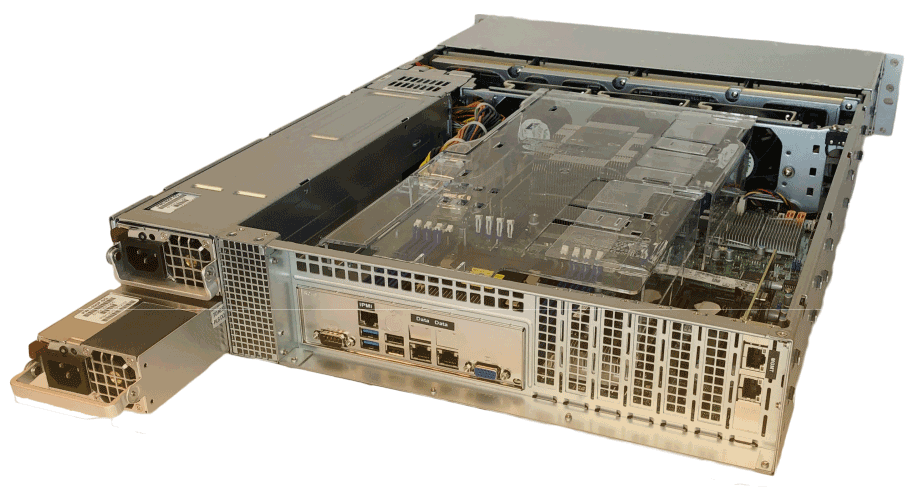
All StoneFly scale out appliance nodes have redundant hot-swappable power supplies. The redundant power supplies ensure business continuity in the event of a single power supply failure.
With the ability to hot-swap, system administrators can seamlessly remove and replace the power supply without disruption or downtime. The end user doesn’t experience anything while the primary system is repaired.
The hardware architecture is built to ensure convenience and high availability for enterprise-grade workloads and use-cases.
Virtually Unlimited Storage Capacities
We’ve written about the maximum storage capacities of the integrated appliance nodes within the scale out hardware in our blog about integrated appliances.
The scale out hardware enables users to scale more than the maximum capacities by adding virtually unlimited number of appliance nodes. The addition of appliance nodes adds more storage capacities and performance capabilities simultaneously.
This makes our scale out systems capable of efficiently storing and managing petabytes of enterprise data.
Dually Scalable: Scale Up & Scale Out Support
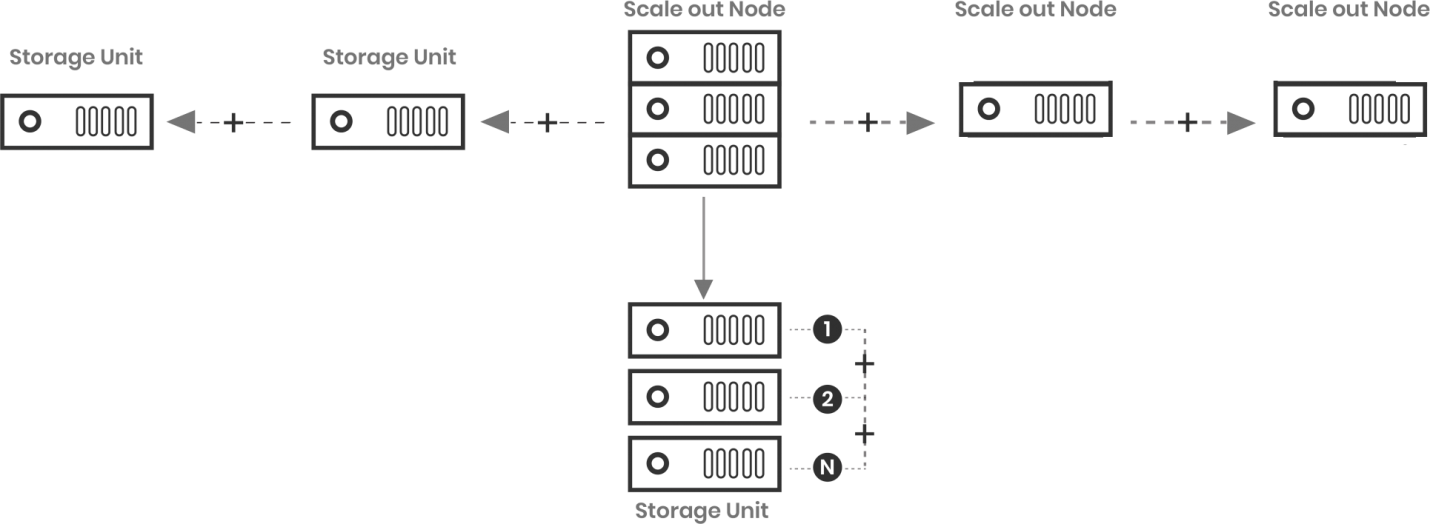
StoneFly scale out systems are dually scalable as they can scale up (vertical scaling) and scale out (horizontal scaling).
Scale Up Capabilities
To scale up or scale vertically and add more storage capacity, storage expansion units can be added to the scale out system. The addition of storage expansion units increase storage capacities from a few terabytes to petabytes.
Supported storage expansion units are available with support for 12, 16, 24, 36, and 60 enterprise SAS drives and SSDs.
For more information about our storage expansion units or EBODs (Expandable Bunch of Drives), contact StoneFly technical support.
Scale Out Capabilities
To scale out or scale horizontally and add both storage capacities and performance capabilities additional integrated appliance nodes can be added to the scale out system.
With each new integrated appliance node in the system, the total storage capacity and the performance capabilities increase. There are virtually no limits to how many integrated appliance nodes can be added to the scale out system.
StoneFly Solutions with Support for Scale Out Hardware
Following is a list of StoneFly data storage and backup and DR solutions with support for scale out hardware architecture:
Data Storage Solutions:
- Enterprise & Value-tier NAS Appliances (SSO™ and VSO™)
- Enterprise & Value-tier Unified NAS + SAN Appliances (USO™)
- Enterprise & Value-tier Unified Server & Storage HCI Appliances (USS™)
Note: StoneFly purpose-built SAN appliances do not support the scale out hardware architecture. For a scalable SAN experience, we recommend the USO unified NAS + SAN appliances. For more information, please contact StoneFly technical support.
Backup & Disaster Recovery Solutions:
- Backup & DR “DR Site in a Box” Appliance (DR365™)
- Veeam-Ready Backup & DR Appliance (DR365V™)
- Backup & DR Appliance for Zerto (DR365Z™)
- Universal Backup & DR Appliance (DR365U™)
Conclusion
The digital footprint of enterprise data is expected to grow globally. Enterprises and organizations that process and rely on data for their daily operations need reliable data storage and/or backup & DR solutions that can scale without limits. Such use-cases make scale out systems the best choice in hardware architecture.
Got Questions about the Scale Out Hardware?
We’d love to answer your queries and help you out with your project. For all business related queries, contact us or schedule a demo.
Email: sales@staging.stonefly.com
Phone: +1 (510) 265 1616
Connect with Us on Our Social Media Channels
Twitter: @stoneflyinc.
Facebook: facebook.com/stoneflyinc
Youtube: youtube.com/stoneflyinc
Linkedin: linkedin.com/company/stonefly-networks
Listen to StoneCast – The Podcast about Enterprise Data Management Challenges & their Solutions
StoneFly Website: https://staging.stonefly.com/podcasts
Podbean: https://stoneflypodcast.podbean.com/
SoundCloud: https://soundcloud.com/stoneflypodcast








